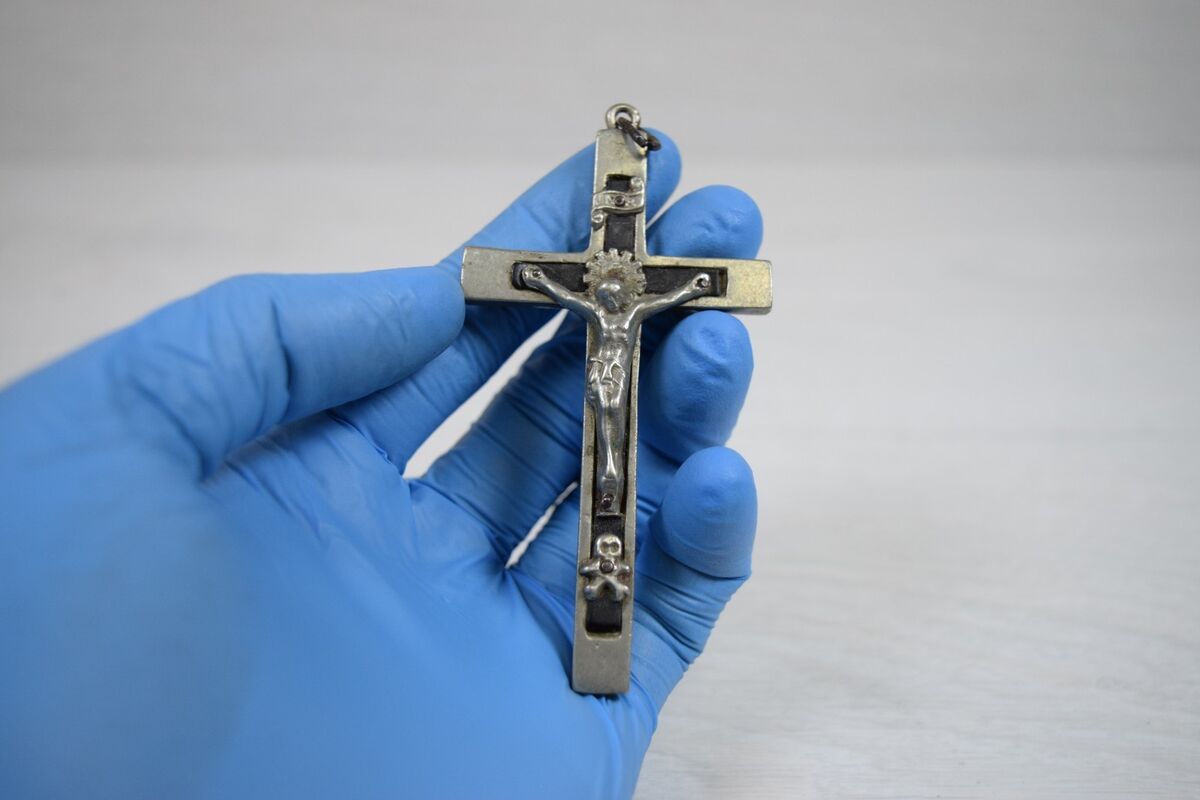
Who was Harold Shipman? Harold Frederick Shipman, often called "Dr. Death," was a British general practitioner and one of the most prolific serial killers in modern history. Born on January 14, 1946, in Nottingham, England, Shipman exploited his position as a trusted doctor to murder an estimated 250 patients, primarily elderly women. His method involved administering lethal doses of diamorphine, then falsifying death certificates to cover his tracks. Arrested in 1998, Shipman was convicted in 2000 for 15 murders and sentenced to life imprisonment. His crimes shocked the world, leading to significant changes in medical practices and regulations in the UK.
Key Takeaways:
- Harold Shipman, also known as "Dr. Death," started as an ordinary student but turned into a notorious killer. His crimes led to significant changes in healthcare policies and regulations.
- Shipman's twisted motives and methods shocked the public and media. His actions inspired various media works and led to reforms in healthcare, emphasizing the importance of whistleblowing and clinical governance.
Early Life and Education
Harold Shipman, known as "Dr. Death," had a life that started quite ordinarily but took a dark turn. Let's explore his early years and education.
-
Birth and Early Life: Born on January 14, 1946, in Nottingham, England, Harold Frederick Shipman grew up on the Bestwood Estate, a council estate.
-
Family Background: His family was working-class and devout Methodist. His father was a lorry driver, and his mother passed away from lung cancer when he was 17.
-
Education: Despite his humble beginnings, Shipman excelled academically. He studied medicine at Leeds School of Medicine, University of Leeds, graduating in 1970.
Medical Career and Early Issues
Shipman's career in medicine began promisingly but soon encountered significant issues.
-
Medical Career: After graduation, Shipman started working as a general practitioner (GP) in 1974 at the Abraham Ormerod Medical Centre in Todmorden, Lancashire.
-
Addiction and Forgery: In 1975, Shipman was fined £600 for forging prescriptions of the painkiller pethidine, which he had become addicted to. This led to his dismissal from the practice.
-
Rehabilitation and New Practice: Following rehabilitation, Shipman began working as a GP in Hyde, Greater Manchester, in 1977. By 1993, he had set up his own practice in Hyde.
The Murders Begin
Shipman's dark side emerged as he began his killing spree, targeting his patients.
-
Murder Methods: Shipman's method was consistent: he administered lethal doses of diamorphine, a pharmaceutical form of heroin, to his patients.
-
Victims: Most of Shipman's victims were elderly women. He killed 171 women and 44 men. The oldest was 93-year-old Anne Cooper, and the youngest was 41.
-
First Victim: His first confirmed victim was Eva Lyons, who died in March 1975 at the age of 71 while he worked at the Abraham Ormerod medical practice.
The Kathleen Grundy Case
One case, in particular, played a crucial role in Shipman's downfall.
- Kathleen Grundy Case: The death of Kathleen Grundy, an 81-year-old former mayoress of Hyde, was pivotal. Shipman forged her will, leaving her entire estate to him, which her daughter discovered.
Arrest and Trial
Shipman's arrest and trial brought his crimes to light.
-
Arrest and Trial: Shipman was arrested on September 7, 1998. His trial began on October 5, 1999, and he was convicted on January 31, 2000, of murdering 15 patients.
-
Inquiry and Investigation: A public inquiry revealed that Shipman had unlawfully killed an estimated 250 patients.
Motives and Methods
Understanding Shipman's motives and methods provides insight into his twisted mind.
-
Motives: The exact motives behind Shipman's actions remain unclear. Speculations include a desire to avenge his mother's death or deriving pleasure from the power he had over his patients' lives.
-
Trust and Deception: Shipman exploited the trust his patients had in him as a doctor. He altered records and falsified death certificates to cover his tracks.
Government Response and Reforms
Shipman's crimes led to significant changes in medical practices and regulations.
-
Government Response: The government inquiry led to changes in medical practices, raising questions about the GMC, revalidation, and clinical governance.
-
Legacy: Shipman's crimes have had profound consequences for British medicine, leading to improvements in monitoring doctors and ensuring the reliability of death certification.
Personal Life and Death
Despite his heinous crimes, Shipman had a personal life that seemed normal to outsiders.
-
Personal Life: Shipman married Primrose May Oxtoby in 1966, and they had four children. His family remained loyal to him despite his crimes.
-
Suicide: On January 13, 2004, Shipman hanged himself in his cell at HM Prison Wakefield, West Yorkshire, at the age of 57.
Public and Media Reaction
The public and media reacted strongly to Shipman's crimes, leading to widespread coverage and analysis.
-
Public Reaction: The public was shocked and outraged by Shipman's crimes, leading to a reevaluation of the trust placed in medical professionals.
-
Media Coverage: Shipman's case has been extensively covered in media, including documentaries, dramas, and cartoons.
-
Satirical References: Shipman has been featured in satirical works, such as the satirical artist Cold War Steve's art and the song "What About Us?" by the Fall.
Psychological Analysis and Impact on Healthcare
Shipman's actions have been analyzed from various psychological perspectives and have had a lasting impact on healthcare.
-
Psychological Analysis: Various psychological theories have been proposed to explain Shipman's behavior, including clinical insanity and obsession with power.
-
Impact on Healthcare: The Shipman case has led to significant changes in healthcare policies, including improved monitoring of doctors and stricter controls on controlled drugs.
GMC Reforms and Death Certification
The General Medical Council (GMC) and death certification processes underwent reforms following Shipman's crimes.
-
GMC Reforms: The GMC implemented reforms, including more stringent standards for revalidation and better procedures for dealing with sick doctors.
-
Death Certification: The inquiry highlighted issues with death certification, leading to improvements in the process to ensure accuracy and prevent similar cases.
Whistleblowing and Clinical Governance
Shipman's case emphasized the importance of whistleblowing and clinical governance in healthcare.
-
Whistleblowing: The case raised awareness about the importance of whistleblowing within the medical community, encouraging reporting of suspicious activities.
-
Clinical Governance: The inquiry led to a greater emphasis on clinical governance, ensuring that healthcare services are safe, effective, and meet patients' needs.
Coroners' Service and Public Inquiry Report
The coroners' service and public inquiry report played crucial roles in uncovering Shipman's crimes.
-
Coroners' Service: The inquiry scrutinized the coroners' service, highlighting the need for better coordination between coroners and healthcare authorities.
-
Public Inquiry Report: Published in 2001, the report concluded that Shipman had unlawfully killed 215 patients, with suspicion remaining over 45 others.
Media and Cultural Legacy
Shipman's case continues to inspire media works and cultural references, reflecting its lasting impact.
-
BBC Drama-Documentary: A BBC drama-documentary titled "Harold Shipman" (2014) starred Ian Brooker and detailed his life and crimes.
-
Podcast Episode: The podcast episode "Catching a Killer Doctor" from the "Cautionary Tales with Tim Harford" series features Shipman's story.
-
Satirical Art: Shipman has been featured in satirical art by artists like Cold War Steve, highlighting darker aspects of British society.
-
Legacy in Media: Shipman's case continues to inspire media works, including plays and documentaries.
-
Play "Beyond Belief": The play "Beyond Belief – Scenes from the Shipman Inquiry" (2004) provided a stark narrative focusing on personal tragedies.
-
Political Mention: In the 2022 Wakefield by-election, Conservative candidate Nadeem Ahmed mentioned Shipman's local connections, highlighting the need for trust in medical professionals.
The Dark Legacy of Harold Shipman
Harold Shipman's story is a chilling reminder of the trust we place in medical professionals and how it can be exploited. Known as "Dr. Death," Shipman used his position to commit heinous acts, taking the lives of an estimated 250 patients. His methods were cold and calculated, administering lethal doses of diamorphine and falsifying death certificates. The case shook the medical community, leading to significant reforms in monitoring doctors and handling controlled substances. Shipman's actions also highlighted the importance of whistleblowing and better death certification processes. Despite his conviction and subsequent suicide in 2004, the impact of his crimes continues to resonate. The reforms inspired by his case aim to prevent such atrocities from happening again, ensuring that trust in healthcare professionals is not misplaced. Shipman's dark legacy serves as a stark warning and a catalyst for change in the medical field.
Frequently Asked Questions
Was this page helpful?
Our commitment to delivering trustworthy and engaging content is at the heart of what we do. Each fact on our site is contributed by real users like you, bringing a wealth of diverse insights and information. To ensure the highest standards of accuracy and reliability, our dedicated editors meticulously review each submission. This process guarantees that the facts we share are not only fascinating but also credible. Trust in our commitment to quality and authenticity as you explore and learn with us.


